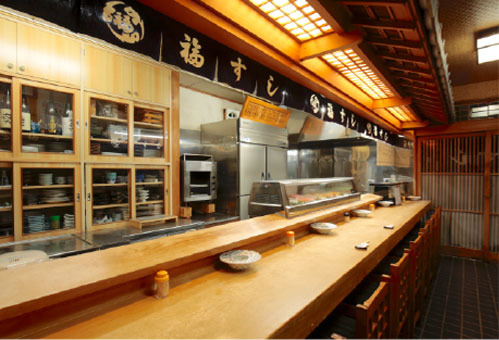
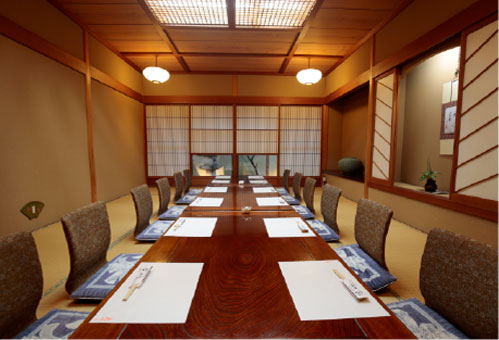
Founder Shinichi Seri was trained at “Fuku Sushi” in Osaka, which was run by his relatives, and learned how to cook Edo-style nigiri-sushi, Kansai-style sushi and related cuisine. After continuing his apprenticeship at several other restaurants, he opened Fuku Sushi at Kamitondacho, Wakayama Prefecture, on July 29, 1979, which was the day of “Shichi Fuku” (seven good luck, pun on Japanese words for 7, 2 and 9).
Since 2005, I, Satonori Seri, the second-generation chef, have been serving at the counter of Fuku Sushi. I was trained in Kyoto cuisine at “Nihon Ryori Hanaman” in Takatsuki, Osaka Prefecture, under late Osamu Takeuchi, who was a key figure in the gastronomical world of Kansai. I was his last disciple. Following this, I honed my skill in Japanese cooking at restaurants in Hirakata and Kitashinchi in Osaka, and then studied sushi under my father, the founder of our restaurant.
Since our establishment, our basic principle has been to offer authentic sushi and high-quality cuisine in a relaxing atmosphere of a “local sushi restaurant”. We continue to welcome you with fresh seafood caught on the same day and local ingredients.
If you are visiting tourist sites of Kinan Area in Wakayama Prefecture, such as Shirahama Onsen Spa, World Heritage site Kumano Kodo or Three Grand Shrines of Kumano (Kumano Hongu Taisha, Kumano Hayatama Taisha and Kumano Nachi Taisha ), please stop at our restaurant.
| Address: | 〒649-2105, 932-8 Asso, Kamitondacho, Nishimuro-gun, Wakayama Google Maps |
|---|---|
| Phone: | 0739-47-1853 |
| Opening Hours: | 17:00 to 22:00, Closed on Monday |

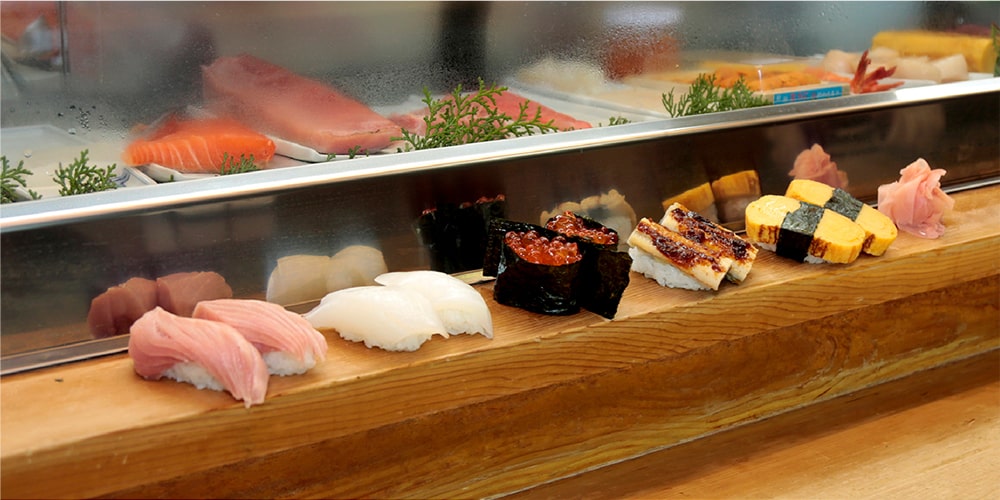
That is because the basis of our cooking is preserved Kansai-style sushi, which uses slightly more concentrated and sweeter vinegar.
Please enjoy “nigiri sushi” where this slightly sweeter rice combined with seasonal seafood of Wakayama.
For instance, we recommend spring bonito and grunt in spring, pike conger, local octopus, Nagareko (type of abalone) and fresh sweetfish in summer, autumn bonito, beltfish, mackerel and bigfin reef squid in autumn, and longtooth grouper, moray eel, thread-sail filefish and pufferfish in winter.
We offer seasonal seafood from the market, mainly caught locally. Thus, ingredients change according to the fishing results and market of each day.
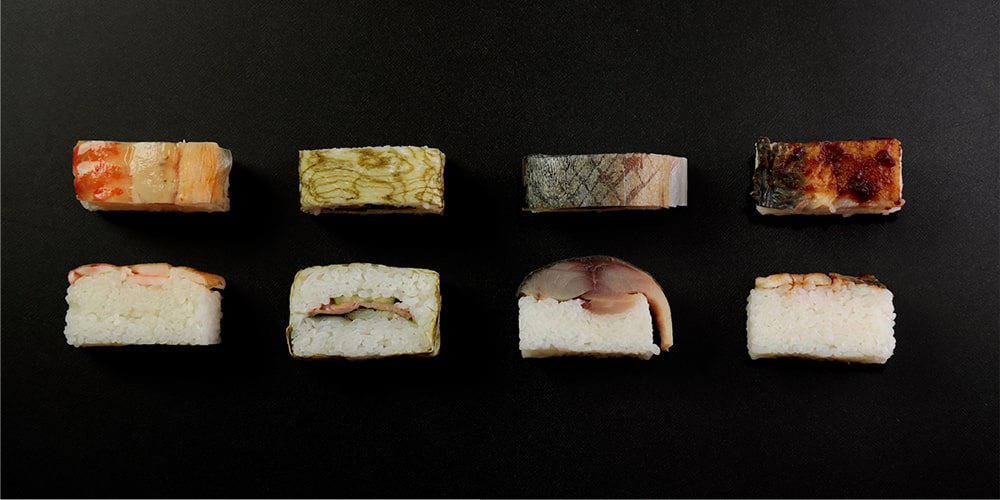
While Edo-style nigiri sushi is more famous, pressed sushi used to be more common in Osaka.
This sushi is prepared by placing rice, fish and other ingredients in a “box” and pressing them together. Thus, it is also called Box Sushi. It is both beautiful and can last longer.
We’d especially like you to try “Iso Maki Sushi”, which is Fuku Sushi’s original dish. Mackerel preserved in vinegar, pickled plum from Kishu and perilla are pressed together with rice, and then wrapped in highly flavorful shredded kombu seaweed. It is a unique pressed sushi of Kishu (Wakayama Prefecture).
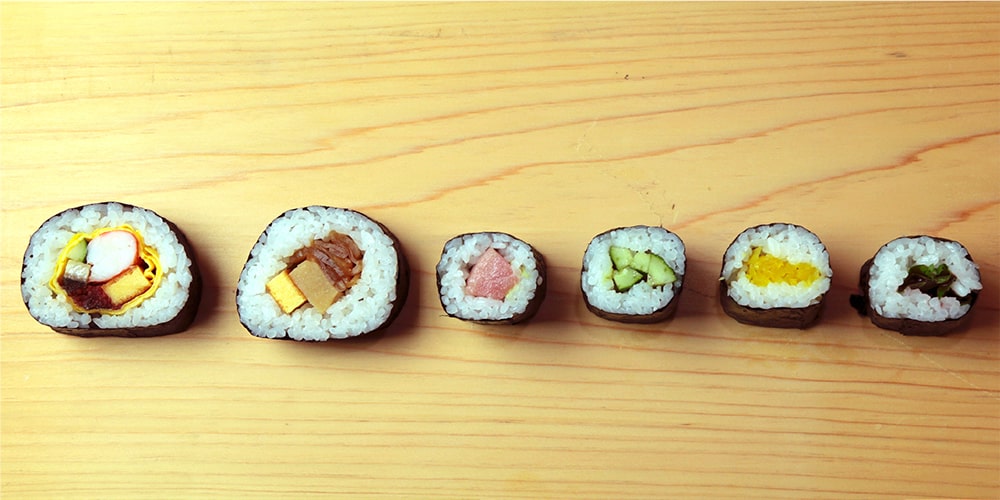
With freeze-dried tofu that absorbed rich flavors, thick Japanese omelet, slowly stewed dried gourd with sweet flavor and aromatic nori seaweed, Maki Sushi Roll is our signature dish.
While eating a whole Ehomaki, or lucky direction roll, during “Setsubun” in early February is common today, this custom was hardly known in this part of Japan 30 years ago.
Our founder thought, “I want people to know this fun and delicious custom”. So he started to provide Maki Sushi to local kindergartens and nurseries for free during Setsubun.
Thanks to this effort, in a few years, there were customers who asked for “Fuku Sushi”, with Maki Sushi Roll in mind, during the Setsubun season.
While there are diverse and colorful Maki Sushi Roll types available during Setsubun, at Fuku Sushi, we offer traditional roll with freeze-dried tofu and dried gourd, which is the authentic style.
In addition, we offer Superior Maki Sushi Roll that contains prawn, eel, cucumber, shredded omelet and stewed sauce. It is our specialty that is also filling, making it popular as a souvenir.
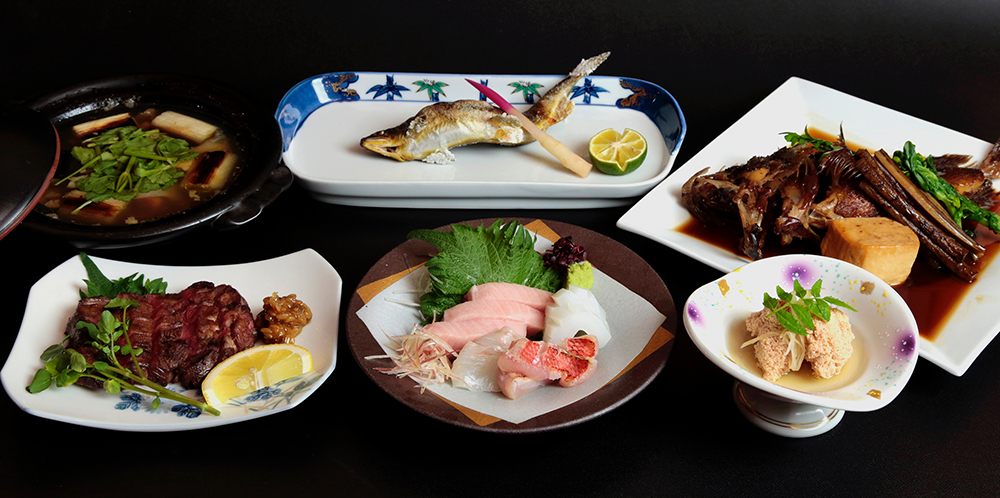
We offer dishes with seasonal ingredients, especially fresh seafood and vegetable.